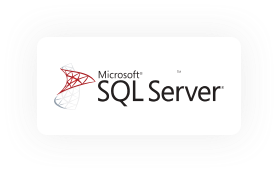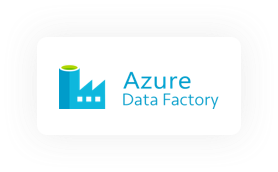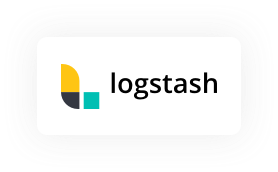Share your requirements and we'll get back to you with how we can help.
Thank you for submitting your request.
We will get back to you shortly.
ETL Vs ELT:
What Works When
Enterprise data spans several datastores—SQL, NoSQLs, flat files, etc. Integrating data from these diverse data sources is a necessary step for a variety of data analytics that organizations rely on for strategic planning and decision-making. ETL and ELT are two processes that help organizations integrate their data.


Difference Between
ETL and ELT
The objective of ETL and ELT is the same—integrate raw data in a single target location and make it available for enterprise analysis and downstream processing. But this objective is realized in different ways.
Extract, Transform, Load (ETL)
The oldest model and the gold standard in data integration, ETL has its origins in structured data and RDBMS. In this approach, data is extracted from legacy systems and moved to a staging area. Here the data is transformed: in other words, cleansed and formatted to suit the reporting and storage requirements of the organization. This transformed data is then loaded into a data warehouse, BI platform, or other target location for analysis. The data model of the warehouse is planned considering the various analytical requirements of the organization.

ETL Strengths
- Mature technology with plenty of solutions in the market, both commercial and open source.
- The ideal approach for integrating data into a data warehouse.
- Tools are available for rule-based automation of the entire process.
- Easy-to-use visual tools to build data processing pipelines.
- Strong data privacy management.
- Predefined models enable faster implementation.
ETL Weaknesses
- The target data structure is predefined. New requirements mean rework of the existing structure. Extensive prior planning is required to avoid rework, which is not often practical.
- Data transformation and loading is a time-consuming process and hence there is no real-time access to data in the data warehouse.
- Not ideal for rapidly scaling, format-agnostic big data ecosystems.
ETL Strengths
- Mature technology with plenty of solutions in the market, both commercial and open source.
- The ideal approach for integrating data into a data warehouse.
- Tools are available for rule-based automation of the entire process.
- Easy-to-use visual tools to build data processing pipelines.
- Strong data privacy management.
- Predefined models enable faster implementation.
ETL Weaknesses
- The target data structure is predefined. New requirements mean rework of the existing structure. Extensive prior planning is required to avoid rework, which is not often practical.
- Data transformation and loading is a time-consuming process and hence there is no real-time access to data in the data warehouse.
- Not ideal for rapidly scaling, format-agnostic big data ecosystems.
Low-code ETL platforms like Talend, AWS Glue, and Alteryx make ETL less cumbersome and resource-intensive. They automate data extraction from multiple sources, transform it into a suitable format, and load it into target systems. They empower data analysts, business analysts, and anyone with data knowledge to build ETL flows irrespective of their programming expertise.
Extract, Load, Transform (ELT)
ELT is a relatively nascent technology that grew alongside big data tools and data lakes. A core concept of ELT is schema-on-read, which is made possible by services like Redshift Spectrum, Athena, Azure Data Lake, Delta Lake, Snowflake, etc.
In ELT, structured, semi-structured, and unstructured data is extracted and loaded into a target repository. While a minimal amount of data validation or identification of duplication may be done, the data is largely raw. The data is transformed by assigning a structure only at the time of analysis. There is no staging involved and the process is more or less in real time.

ELT Strengths
- ELT is equipped to handle large-volume data and diverse data formats (including unstructured data).
- Highly suited for easily scalable cloud environments.
- Data ingestion is faster compared to ETL as transformation is delayed till the point of demand or query.
- Faster and flexible implementation is possible as detailed prior knowledge of future analytical requirements is not necessary.
- As the data structure is not predefined, data can be flexibly used according to the specific need of the analysis.
ELT Weaknesses
- ELT process does not involve any data transformation, such as removal of personally identifiable information. This can create compliance risks.
- Since analysis is performed on demand, it can lead to non-availability of continuous updates.
- As a relatively new and evolving technology, it is subject to change.
ELT Strengths
- ELT is equipped to handle large-volume data and diverse data formats (including unstructured data).
- Highly suited for easily scalable cloud environments.
- Data ingestion is faster compared to ETL as transformation is delayed till the point of demand or query.
- Faster and flexible implementation is possible as detailed prior knowledge of future analytical requirements is not necessary.
- As the data structure is not predefined, data can be flexibly used according to the specific need of the analysis.
ELT Weaknesses
- ELT process does not involve any data transformation, such as removal of personally identifiable information. This can create compliance risks.
- Since analysis is performed on demand, it can lead to non-availability of continuous updates.
- As a relatively new and evolving technology, it is subject to change.
Tools and Technologies





Comparison of ETL and ELT
| Considerations | ETL | ELT |
|---|---|---|
| Data source | Schema-based SQL sources and most NoSQL systems. Easy integration with ERP and CRM etc., both on-premise and cloud-based. | Any structured, unstructured, or semi-structured data sources, both on-premise and cloud-based. |
| Data type | Ideal for processing data with well-defined structure such as point-of-sale data, financial transactions, etc. | Both machine and human-generated data types, including click-streams, text files, videos, emails, etc. |
| Migration speed | Slow. Batch processing of data in the staging location before loading into target repositories takes time. | High. No intermediate staging area or transformations are required before loading. |
| Infrastructure requirements | High upfront investment. Traditionally, to overcome storage constraints, data is summarized. | Low upfront investment. Data transformation takes place in target locations. Hence dedicated. |
| Target storage | Data warehouse | Data warehouse, data lakes, lakehouses, data marts |
| Data updates | Periodic (Daily, weekly, monthly, etc.) | Real time |
| Maintenance | Frequent maintenance, as processes are repeated at predefined intervals. | Automation and cloud-based operations reduce post-production maintenance. |
| Compliance | Strong and fault-resistant enforcement of data governance rules. | Weaker system for data governance policy enforcement. |
| Analytics | Quicker and predefined. | Demand-driven and exploratory. |
Our Services
Consultation
Consultative process for selection of data integration approach, considering your organization’s current and future requirements. Our data engineers and analysts help map a solution based on what business questions you want answered, the types of data at hand, and other important variables.
Platform Engineering
We help establish a central repository for business analytics. This includes architecting, deploying, and maintaining solution components, including data integration tools, storage solutions such as data warehouse, data lake, etc, which can be on-premise, cloud, or hybrid.
Solution Engineering
Setting up and managing data pipelines to ensure seamless data flow from source to target locations. This is done by taking into consideration the differences in target sources, data quality, storage facilities, and business-specific requirements.
Consultation
Consultative process for selection of data integration approach, considering your organization’s current and future requirements. Our data engineers and analysts help map a solution based on what business questions you want answered, the types of data at hand, and other important variables.
Platform Engineering
We help establish a central repository for business analytics. This includes architecting, deploying, and maintaining solution components, including data integration tools, storage solutions such as data warehouse, data lake, etc, which can be on-premise, cloud, or hybrid.
Solution Engineering
Setting up and managing data pipelines to ensure seamless data flow from source to target locations. This is done by taking into consideration the differences in target sources, data quality, storage facilities, and business-specific requirements.
